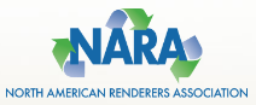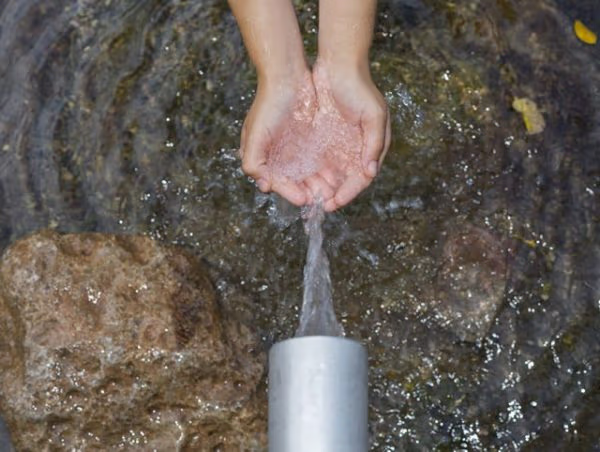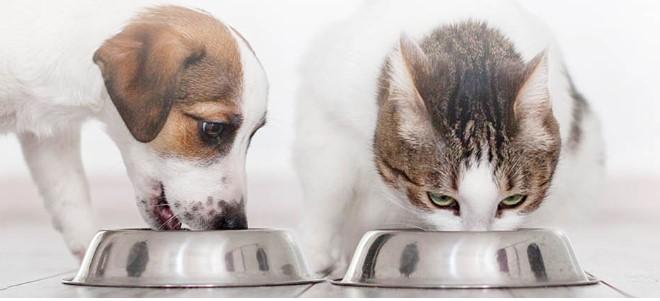

North American Renderers Association
https://nara.org/
North American Renderers Association
About the company
The North American Renderers Association (NARA), headquartered in Alexandria, Virginia, was formed in 1933 as the professional organization of the rendering industry.
Company News
 Market Information
Market Information
2+ MIN
21/02/2025
Resounding Success of the International Rendering Symposium 2025
Growth in Participation and Global Reach This year, the event showed significant growth in the global audience, with a noticeable increase in international participation. Spanish and Portuguese attendees showed higher growth with strong interest from Colombia, Brazil, and Mexico. Moreover, French as the official language allowed the event to extend to new regions, including Africa. The in-person version brought together a highly specialized public, while the online viewers were active during the event, consolidating the global impact of this year's edition. A Great Effort of Dissemination and Digital Production The International Recycling Symposium 2025, organized by the North American Renderers Association (NARA), achieved a significant impact thanks to the comprehensive strategy of dissemination and digital production. The advertising had the valuable support of associations and specialized media, such as ABRA, All Pet Food, and Pet Food Latinoamérica, which actively contributed to its dissemination through digital platforms, increasing the reach in the sector. Besides leading the symposium's organization, NARA played a key role in the digital production of the event, managing each stage of the process: before, during, and after the event. It also had the support of AgriGlobal Market, which collaborated with the digital strategy, ensuring effective communication and an accessible platform for participants at a global level. An Expanding Event The rendering and animal nutrition industry was a meaningful sector in the event and represented an important part of the attendees. In addition, the growing participation of the education sector reaffirmed the importance of the symposium as a training and updating platform for professionals in the industry. The success of the International Rendering Symposium 2025 bolsters the relevance of the event as an essential meeting point. With growing global interest and expanded participation, the symposium continues to position itself as a benchmark in the discussion about sustainability and the biocircular economy worldwide. The conferences in all languages and the PDFs of each presentation are available on the event's official webpage: Home | Nara Symposium. About NARA The North American Renderers Association (NARA) is the leader in promoting responsible recycling of animal products, supporting sustainable practices that boost biocircular economies and encourage a green future for the following generations. Source: North American Renderers Association (NARA) Check out our summary of the event and the interview with Charles Starkey:
 Market Information
Market Information
3+ MIN
17/05/2024
Environmental Sustainability
In today's world, protecting the environment and sustainability is a critical priority, and the practice of rendering can provide a solution to help. Rendering is a powerful process to reclaim and reuse animal agriculture resources responsibly, reduce food waste, and find important uses for meat co-products (also called by-products). Rendering uses these leftover materials from animal processing and recycles them for new applications instead of discarding them. Products such as fat, bones, and other animal materials can be reused instead of contributing to waste. Rendering has a (hugely) positive environmental impact and is one of the most sustainable practices we, as a community, can support to improve our carbon footprint, reduce food waste, and return clean water to the environment's natural waterways. It's an often-overlooked industry that equips the entire food processing chain to use food materials more responsibly and sustainably. By reclaiming meat leftovers and including them in other products, such as animal feed, pet food, and renewable biofuels, rendering prevents waste and makes our resources go further for critical needs. How Resilient Rendering Works Because many people consider unused animal co-products or by-products inedible (i.e., meat from the animal that we choose not to eat), these leftovers often end up in landfills. Resilient rendering 'recycles' those co-products into valuable items like pet food and biofuel. Rendering's reduced carbon footprint is a result of using sustainable processing methods. Resilient rendering expands our uses for leftover food products produced from animal agriculture and helps us conserve resources while decreasing food waste across the production chain. Environmental Impacts of Rendering Rendering delivers essential benefits for increased sustainability. Products developed from rendered material follow strict safety standards to provide high-quality products from sustainable materials. Some reasons rendering makes a positive impact on the environment include: Environmental protection: Rendering helps protect the environment with lower greenhouse gas emissions than other disposal methods, decreased energy and water consumption, and more efficient processing technologies. Water reclamation: Rendering reclaims billions of gallons of water that would otherwise be wasted or contaminated. Water reclamation rendering methods improve water quality, naturally releasing water back into the environment through evaporation or returning it to streams and rivers according to federal, state, and local water standards. Food waste prevention: Reclaiming meat leftovers that would otherwise be discarded decreases our food production footprint. It also reduces waste piling up in landfillsas we reuse those co-products instead. Sustainable products: Renderers reclaim and recycle items such as used cooking oil and rendered protein ingredients for renewable diesel, animal feed, pet food, and many other products. Discover How NARA Works for Sustainability The North American Renderers Association (NARA) represents independent renderers and meat processors across the United States and Canada. Their members also include those who support renderers with equipment and services or broker and buy processed rendered products. NARA's mission is to represent the interests of the rendering industry in the political realm, provide resources for industry members and educate the public on the vital work renderers do. They offer a wide range of services and prioritize listening to their members' feedback. Learning about their evolving needs, they strive to provide the support and resources they require most. Also, they're committed to being the voice of the rendering industry to local and national government officials. As a non-profit, NARA is committed to supporting the industry and furthering environmental sustainability efforts in the best way we can. They support those in the rendering industry with trusted resources to help them manage regulatory compliance, optimize rendering processes and promote meat science and technology awareness. NARA advocates on behalf of renderers and aims to spread the word about the rendering industry's vital role in helping to protect and preserve environmental sustainability. They focus on providing innovative solutions for reclaiming meat leftovers and consistently reducing food waste. If you'd like to learn more about NARA, click HERE. Source: NARA.
 Animal Origin
Animal Origin
2+ MIN
22/11/2023
NARA recognizes Pet Food Alliance coordinator
Martin is an associate professor in Meat Safety and Quality and a meat extension specialist at the Colorado State University's (CSU) Department of Animal Sciences. At CSU, Martin leads a research program focused on the safety and quality of meat and other meat-related products that aims to support industry partners. Additionally, she collaborates with meat and livestock industry members, and serves as the co-leader of Upskilling, a workforce and educational program at CSU's College of Agricultural Sciences that provides career pathways for those in the agri-food industry. In addition to her work at CSU, Martin also coordinates the PFA, a joint project facilitated through the university and FPRF. The alliance seeks to unite members of the rendering, pet food, laboratory and research, academia and technological industries in order to explore opportunities and create solutions to industry-wide challenges. According to NARA, Martin's ongoing commitment to the PFA, as well as her continued support of the FPRF and its initiatives, makes her a worthy recipient of the prestigious award. 'I am truly honored to receive the Fred Bisplinghoff Research Innovation Award from FPRF,' Martin said. 'I am grateful for the opportunity to serve the rendering industry through the Pet Food Alliance and thankful for the numerous industry partners who are willing to collaboratively develop solutions for industry-wide challenges.' Charles Starkey, Ph.D., vice president of scientific and regulatory affairs of NARA and director of research at FPRF, presented Martin with the award during NARA's 2023 Convention in Naples. By NARA
 Animal Origin
Animal Origin
2+ MIN
27/10/2023
Sustainability of Rendering
Instead of wasting half of the meat we farm and buy, Rendering reclaims these unwanted 'leftovers' and transforms them into ingredients for countless products, recycling 99% of this unwanted meat.
By recycling animal leftovers, renderers create valuable ingredients from resources that would otherwise be thrown away, taking up enormous amounts of precious landfill space.
Instead of wasting these animal parts through other disposal methods, renderers recycle the materials into 19 billion pounds of fat, oil and protein products.
Rendering not only creates alternative, sustainable fuels to power trucks, trains, water vessels and other vehicles but also nutritiously feeds cattle, hogs, turkeys, chickens, household pets and other animals.
Renderers play an important role reducing food waste, sustainably recycling valuable agricultural resources and positively contributing to local, state and national and international economies.
Rendering Leads to a Reduced Carbon Footprint
Rendering also protects the environment from the high greenhouse gas emissions of other disposal methods, reduces energy and water consumption, minimizes environmental impacts of animal agriculture and supports communities.
The environmental sustainability of rendering avoids at least 90% of potential greenhouse gas emissions compared with industrial composting and sequesters 5 times the amount of greenhouse gas emissions as it emits.
If all renderable product were sent to the landfill, all available space would be used in 4 years.
Economic Sustainability of Rendering
The rendering industry is financially stable, secure and sustainable with $10 billion in annual economic contribution.
Workers are highly-skilled and well compensated and employee retention rates are high, leading to more stability and greater contributions to local communities.
Simple Fact: Rendering jobs cannot be exported due to the raw and perishable nature of the material our industry reclaims.
Source: North American Renderers Association
 Animal Origin
Animal Origin
3+ MIN
03/08/2023
NARA -Animal Nutrition
Because North American renderers process at optimum temperatures over a prescribed length of time and they use strict quality control measures, animal protein meals are consistently high quality, uniform, stable, affordable, and nutritionally dense. The materials renderers provide allow for more sustainable pet food sourcing while producing high-quality meals for animals. Rendering practices are vital for sustainable and well-balanced pet food nutrition. Ingredients in Pet Food Pet food uses a wide range of ingredients that renderers can process from waste products. As a result, when excess materials from meats are removed during processing, they can go toward pet food nutrition. There are several critical nutrients that pets need to stay healthy, such as proteins, minerals, vitamins, and carbohydrates, and animal nutrition research demonstrates that rendering can have a vital role in meeting this need. Key ingredients that come from rendering include: Meat and bone meal. Animal proteins. Animal fats. These substances can serve as crucial nutrients for pets' health and daily dietary needs. The ingredients may include human-grade food and other materials deemed safe for animal consumption. Dogs and cats of different breeds and sizes have various nutritional needs and may eat wet and canned foods, kibble, dry food, treats, and other options. Based on animal nutrition facts, individual pet food manufacturing companies follow different formulas to meet dietary requirements for animals. Applications Renderers can use a wide range of strategies to address critical requirements for animal protein meals. By repurposing meat, fat, and other processing remnants, the industry can provide resources to feed pets and aquaculture and meet healthy dietary benchmarks while reducing the amount of waste sent to landfills. Pet Food Pet food and products are a multi-billion dollar industry, and the market is growing. Rendered protein meals such as meat and bone meal, poultry co-product (also called by-product) meal, and fish meal are almost universally used in pet foods. They provide high-quality protein with a good balance of amino acids essential to pet health. There are several key advantages to using rendering practices to source pet food, including: Safety: Renderers meet high-quality food processing standards to prepare materials for animal consumption, helping ensure the final products are safe and beneficial for pets' health. Sustainability: By using materials that would otherwise be considered waste from standard meat preparation, renderers help save production costs and protect the environment. Nutrition: The proteins and fats obtained through the rendering process are highly advantageous for pets' day-to-day health and meet dietary nutrition benchmarks. View exciting results from a first-of-its-kind joint pet food study with the Pet Food Institute and AFIA detailing how the pet food production process feeds the agriculture economy and reduces food waste. This insightful research analyzes the wide-ranging benefits of rendering and pet nutrient production. It also demonstrates how the practice contributes to long-term sustainability efforts in this industry. Learn More With NARA At the North American Renderers' Association (NARA), we're committed to supporting renderers and meat processors in sustainable waste product recycling. We represent the industry with advocacy and trusted resources that help educate and grow this critical field. For more information on our services and how to become a member of our organization, contact us today. Source: North American Renderers Association




